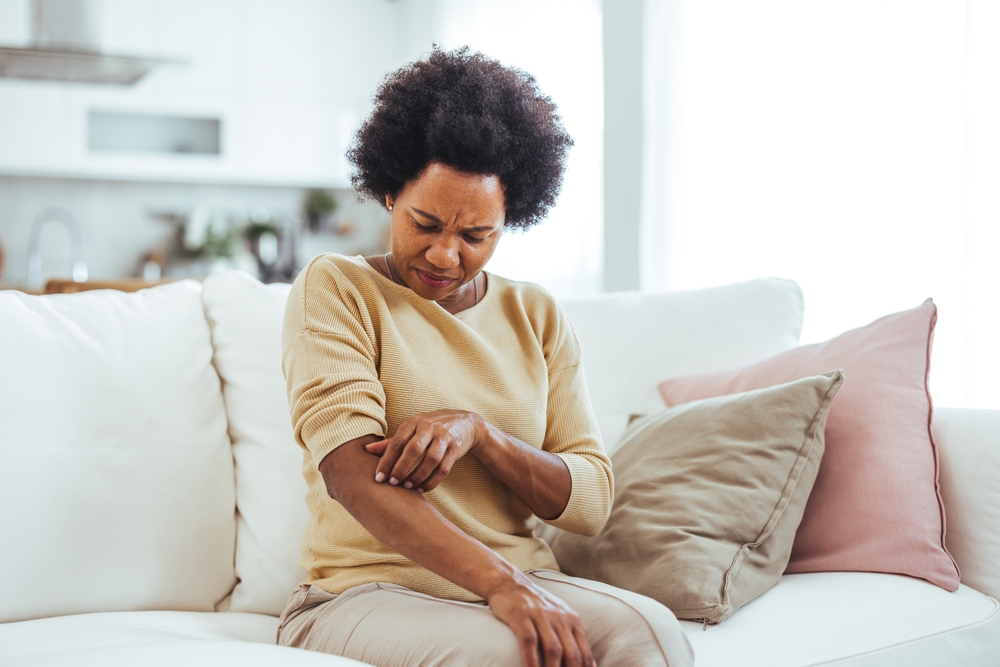While Hollywood and urban legends paint dramatic tales about spider bites, medical professionals share a fascinating reality: among the 3,500 spider species calling America home, only a handful can pierce human skin. This revelation comes as welcome news to millions who harbor deep-seated fears about these misunderstood creatures.
Decoding nature’s subtle signs
The telltale signature of a spider encounter often appears as two tiny puncture marks on the skin, yet medical professionals note that many assumed spider bites actually stem from other sources. Dr. Sarah Martinez, an emergency medicine specialist at Boston General Hospital, explains that mosquitoes, ticks, and even allergic reactions frequently masquerade as spider bites.
The notorious few
Among America’s vast spider population, two species command particular attention: the black widow, with its distinctive red hourglass marking, and the brown recluse, bearing its violin-shaped pattern. These reclusive creatures prefer dark, undisturbed spaces, making accidental encounters rare but significant when they occur.
Reading your body’s signals
The human body responds to spider bites in fascinating ways. Initial reactions might include localized swelling and redness, while more significant encounters could trigger muscle cramps, sweating, or nausea. Understanding these signals helps families distinguish between minor incidents and situations requiring medical attention.
The healing timeline
Most spider encounters resolve naturally within a week, much like other minor insect bites. However, certain species’ bites merit closer attention. The brown recluse’s bite, for instance, might initially seem unremarkable but can develop into a more complex situation over several days.
Natural healing approaches
Many families find relief through simple home care methods. A cold compress wrapped in soft cloth can ease discomfort, while keeping the affected area elevated helps reduce swelling. Over-the-counter antihistamines often provide welcome relief from itching and irritation.
When to seek professional care
Medical professionals emphasize that while most spider encounters remain harmless, certain situations warrant immediate attention. Difficulty breathing, severe pain, or spreading discoloration around the bite area signal the need for professional evaluation.
Understanding spider behavior
These creatures typically avoid human contact, preferring solitude in dark, quiet spaces. Understanding their habits helps families minimize unexpected encounters. Spiders commonly seek shelter in undisturbed areas like storage boxes, woodpiles, or seldom-worn shoes.
Creating safer spaces
Simple adjustments can significantly reduce the likelihood of spider encounters. Regular cleaning of storage areas, sealing potential entry points, and maintaining tidy outdoor spaces help discourage spider settlement near living areas.
Outdoor awareness
Nature enthusiasts and gardeners can take simple precautions to minimize spider encounters. Wearing gloves while working outdoors and shaking out stored equipment before use helps prevent unexpected meetings with these eight-legged neighbors.
The role of seasonal changes
Spider activity often increases during certain seasons, particularly as temperatures shift in spring and fall. These patterns influence where and when encounters might occur, helping families plan accordingly.
Global perspectives
While American families mainly concern themselves with black widows and brown recluse spiders, understanding global species helps travelers make informed decisions. Different regions house various spider species, each with unique characteristics and behaviors.
Future developments
Medical research continues to advance our understanding of spider bites and their treatment. New insights help healthcare providers offer more effective care while dispelling common misconceptions about these creatures.
Family preparation
Keeping basic first aid supplies readily available helps families respond confidently to potential spider encounters. Simple items like antihistamines, clean bandages, and cold compresses form the foundation of home care.
Environmental considerations
Climate changes influence spider habitats and behaviors, potentially affecting where certain species might appear. This understanding helps communities adapt their awareness and prevention strategies accordingly.
The world of spiders, while often misunderstood, reveals fascinating insights about nature’s complexity. By understanding these creatures’ true nature and taking sensible precautions, families can maintain perspective about spider encounters while enjoying outdoor activities with confidence.














